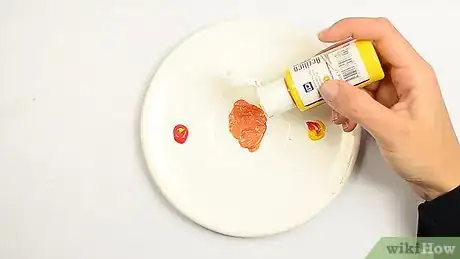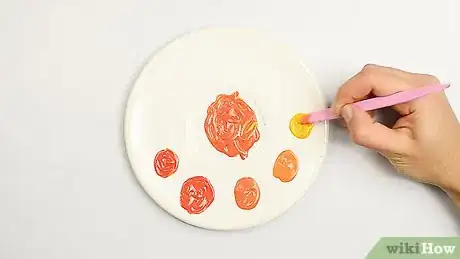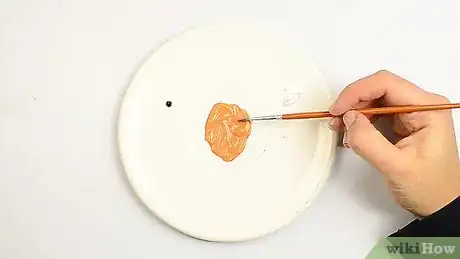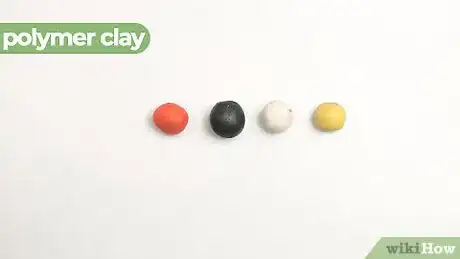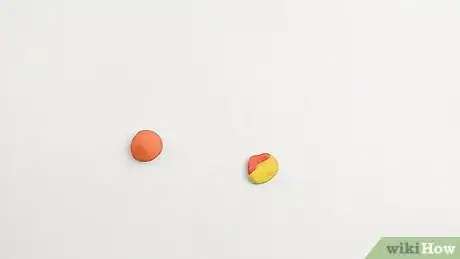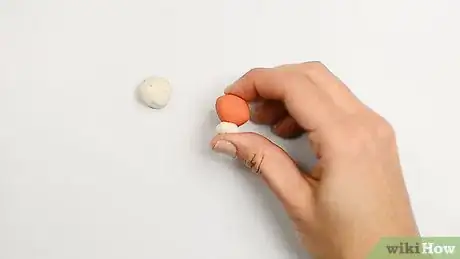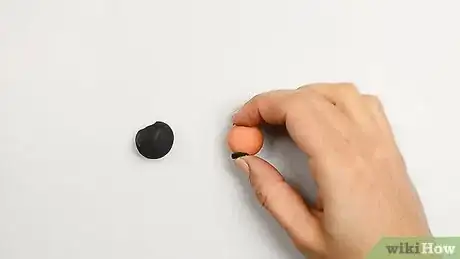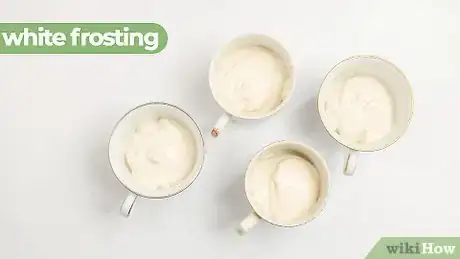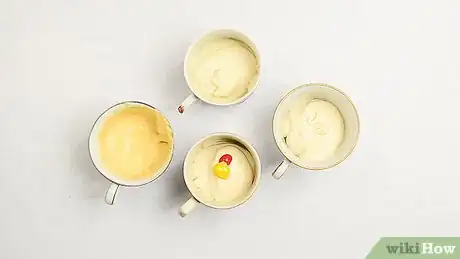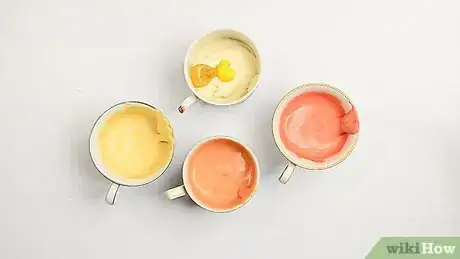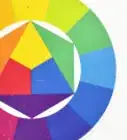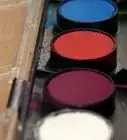wikiHow is a “wiki,” similar to Wikipedia, which means that many of our articles are co-written by multiple authors. To create this article, 11 people, some anonymous, worked to edit and improve it over time.
The wikiHow Video Team also followed the article's instructions and verified that they work.
This article has been viewed 545,399 times.
Learn more...
Orange is a secondary color made from combining red and yellow, but using different amounts of each color will create different hues of orange. After you learn the basic color theory involved, you should be able to apply the principle to various mediums, including paint, frosting, and polymer clay.
Steps
Creating the Color
-
1Mix red and yellow. Orange is a secondary color, which means that you can make it by combining two primary colors. The two primary colors needed for orange are red and yellow.[1]
- "Primary" colors exist naturally and cannot be created by combining other colors. Red, yellow, and blue are the three primary colors, but you'll only need red and yellow to create orange.
- "Secondary" colors are made by combining two primary colors. Since you need to combine red and yellow to make orange, orange is considered a secondary color. The other two secondary colors are violet and green.
-
2Change the hue by altering proportions. Combining equal parts of pure yellow and pure red will create pure orange, but if you'd like a slightly different hue, you can add either more yellow or more red to change it.
- Yellow-orange and red-orange are the two simplest variations. These colors are also known as "tertiary" colors. Tertiary colors fall evenly between secondary and primary colors on the color wheel.
- Yellow-orange consists of two parts yellow and one part red, or one part orange and one part yellow.
- Red-orange consists of two parts red and one part yellow, or one part orange and one part red.
Advertisement - Yellow-orange and red-orange are the two simplest variations. These colors are also known as "tertiary" colors. Tertiary colors fall evenly between secondary and primary colors on the color wheel.
-
3Add black or white to change the value. You can lighten or darken orange without changing the hue by adding white or black, respectively.[2]
- The amount of white or black you add will determine how much lighter or darker the orange hue becomes.
- Note that lighter values are typically referred to as "tints," while darker values are commonly referred to as "shades."
Making Orange Polymer Clay
-
1Obtain several hues of clay. Ideally, you should have at least two red clays, two yellow clays, one white clay, one translucent clay, and one black clay.
- Try to include both one warm red clay (with a hint of orange) and one cool red clay (with a hint of violet).
- Likewise, grab one warm yellow clay (with a hint of orange) and one cool yellow clay (with a hint of green).
- Note that you can use more than two hues each of red and yellow, if desired, but using at least two should still allow you to observe the principle and understand how it works.
-
2Mix together one red clay with one yellow clay. Using your fingers, pinch off equal portions of warm red and warm yellow. Press the two pieces together and knead them between your fingers until evenly blended.[3]
- When finished, you should see a solid orange color without streaks.
- This combination of red and yellow should produce a fairly vibrant orange since both starting clays leaned toward the orange portion of the color wheel.
-
3Work through the other red and yellow combinations. Make three more samples by combining equal parts of one red and one yellow clay. Follow the same procedure used to make the first orange sample.
- Warm red and cool yellow should create a medium-tone apricot color.
- Cool red and warm yellow should create a medium-tone melon color.
- Cool red and cool yellow should create a dull orange with hints of brown in it.
-
4Lighten the orange. Pick your favorite created hue of orange and duplicate the color twice more. You can lighten orange clay in two ways, and using two samples of the same hue will make it easier to compare results.
- Add a small pinch of white clay to one orange sample, blending until no streaks remain. The color should have a lighter tint while also looking less bright.
- Add a small pinch of translucent clay to the other orange sample, blending until no streaks remain. The color should look less bright but should not change value or tint.
- Note that adding too much translucent clay will create a semi-transparent wash instead of an opaque orange.
-
5Darken the orange. Create another sample of your favorite orange clay color. Pinch off a small piece of black clay and mix it into the sample, blending until no streaks remain.
- The resulting orange will have the same hue, but the black should give it a darker shade. As a result, the orange may look slightly brown.
- Black clay can have a dramatic effect on other clay colors, including orange, so you should work in very small amounts to avoid darkening the shade too much.
Making Orange Frosting
-
1Set up a few samples. Prepare at least four custard dishes or small bowls. Spoon about 1/4 cup (60 ml) of prepared white frosting into each dish.
- There are multiple ways to create orange frosting, but each one requires a base of white frosting. You'll need at least four samples of white frosting, but setting up six to twelve will allow you to experiment with more options.
- You should obtain at least four different food dyes: one orange, one red, one yellow, and one black. Consider getting additional hues of red and yellow for additional experiments.
- Ideally, you should use paste, powder, or gel food dyes that are designed for use with frosting. Avoid liquid food dyes since these tend to have a negative effect on frosting consistency.[4]
-
2Mix orange food coloring into one sample. Dunk a clean toothpick into the container of orange food coloring. Transfer the coloring by dunking the newly-coated end into one sample dish of frosting. Stir until the food color is evenly distributed, leaving behind no visible streaks of color.
- Since you're mixing the food coloring with white icing, the final result won't be as dark as the hue of the dye. You'll always end up with a lighter shade, regardless of how much orange dye you use.
- Note, however, that adding very small amounts will create a very light orange while adding greater amounts will produce a stronger, brighter value.
-
3Combine red and yellow food coloring in another sample. Dunk separate, clean toothpicks into one container of red food coloring and one container of yellow food coloring. Mix both dyes into another sample of white frosting, continuing until no streaks remain.
- The combination should result in an orange frosting. This second sample may not look exactly the same as your first, of course, since the red and yellow you use may result in a slightly different hue.
-
4Create a darker shade of orange. Create another sample of orange frosting using the orange food dye or the combined red and yellow dyes. Mix a very small dot of black food coloring into the sample, as well.
- The black should darken the shade of the orange without changing the hue. Only use small amounts of black food coloring at a time, though, since even small amounts can have a dramatic impact on the color of the frosting.
-
5Try other combinations as desired. If you prepared any additional samples of white icing, you can use them to experiment with different combinations or food colorings. Take notes so you'll be able to duplicate the same orange hues and values later.
- Most food coloring manufacturers have recommendations for you to follow, but you can easily experiment on your own.
- Several ideas include:
Community Q&A
-
QuestionDo I mix red and yellow to make orange?
 Community AnswerYes.
Community AnswerYes. -
QuestionHow can I make green from orange?
 C GraceCommunity AnswerIt is not possible to make green from orange. They are both secondary colors. Orange is made from yellow and red, primary colors. Green is made from blue and yellow, primary colors.
C GraceCommunity AnswerIt is not possible to make green from orange. They are both secondary colors. Orange is made from yellow and red, primary colors. Green is made from blue and yellow, primary colors. -
QuestionHow can I make orange from red yellow and green?
 Sehara GoonasingheCommunity AnswerYou would only need to use red and yellow to make orange. If you want to make a darker orange, use more red. For a lighter orange, use more yellow.
Sehara GoonasingheCommunity AnswerYou would only need to use red and yellow to make orange. If you want to make a darker orange, use more red. For a lighter orange, use more yellow.
Things You'll Need
Making Orange Paint
- Paint palette or paint dish
- Palette knife
- Scrap paper
- Paint brush
- Red craft paint
- Yellow craft paint
- Black craft paint
- White craft paint
- Orange craft paint
Making Orange Frosting
- 4 to 12 small bowls
- Prepared white frosting
- Orange food coloring
- Red food coloring
- Yellow food coloring
- Black food coloring
- Toothpicks
- Spoons
Making Orange Polymer Clay
- Warm-tone red polymer clay
- Warm-tone yellow polymer clay
- Cool-tone red polymer clay
- Cool-tone yellow polymer clay
- White polymer clay
- Translucent polymer clay
- Black polymer clay
References
- ↑ https://artincontext.org/what-colors-make-orange/
- ↑ https://artincontext.org/what-colors-make-orange/
- ↑ http://www.jaedworks.com/clayspot/polyclay-faq/mixing.html
- ↑ http://www.bhg.com/recipes/how-to/bake/how-to-color-icing/
- ↑ http://www.foodnetwork.com/recipes/articles/frost-by-numbers-how-to-make-frosting-colors.html
- ↑ http://www.wilton.com/decorating/icing/icing-color-chart.cfm
- ↑ http://www.cakecentral.com/tutorial/20151/how-to-color-your-icing
About This Article
To make orange paint, mix together equal parts red and yellow paint. For a lighter yellow-orange color, mix together 1 part red paint and 2 parts yellow paint. To make a darker red-orange color, combine 1 part yellow paint and 2 parts red paint. If you don’t have yellow paint, mix together equal parts red and green paint to make yellow, then mix that with more red paint to make orange. To make orange food coloring, mix together equal parts red and yellow food coloring. Add more red food coloring to make the color darker, or add more yellow food coloring to make it lighter. For tips on how to make orange using paint, food coloring, or clay, read on!
